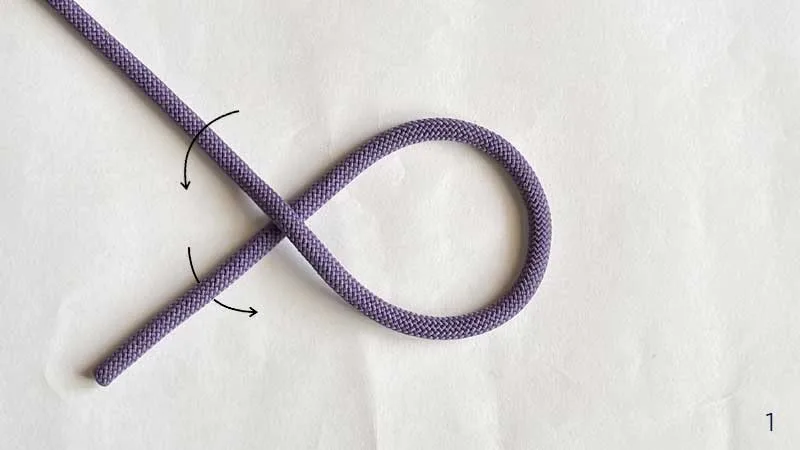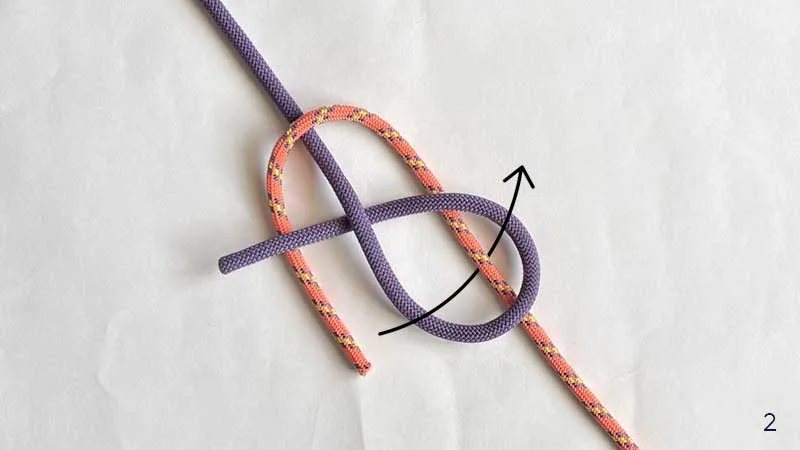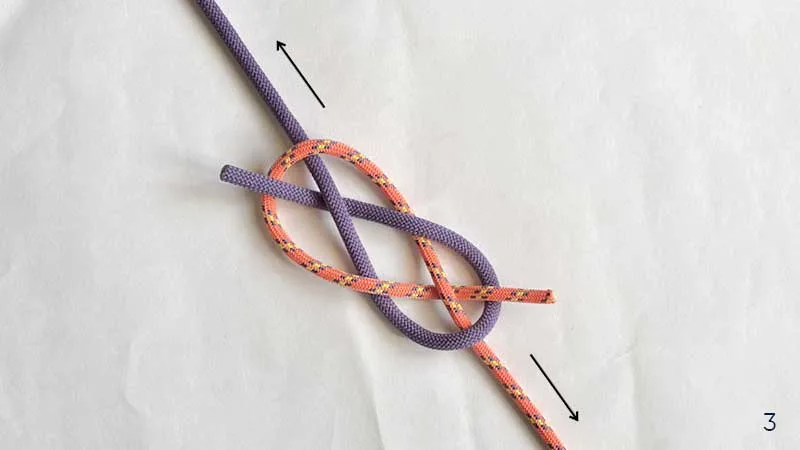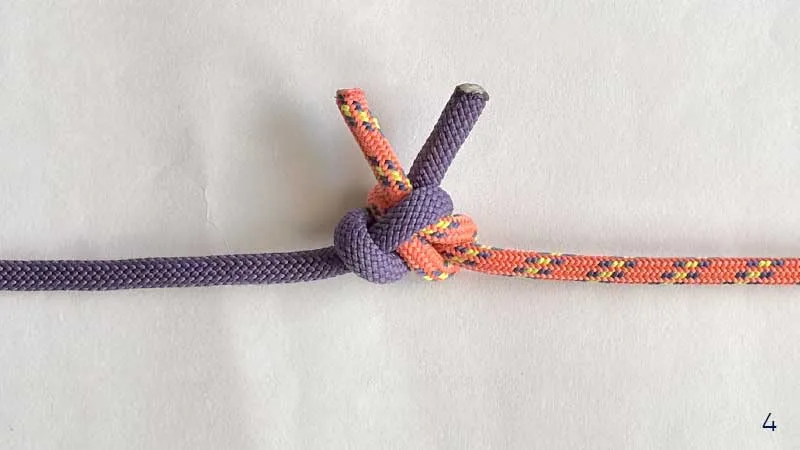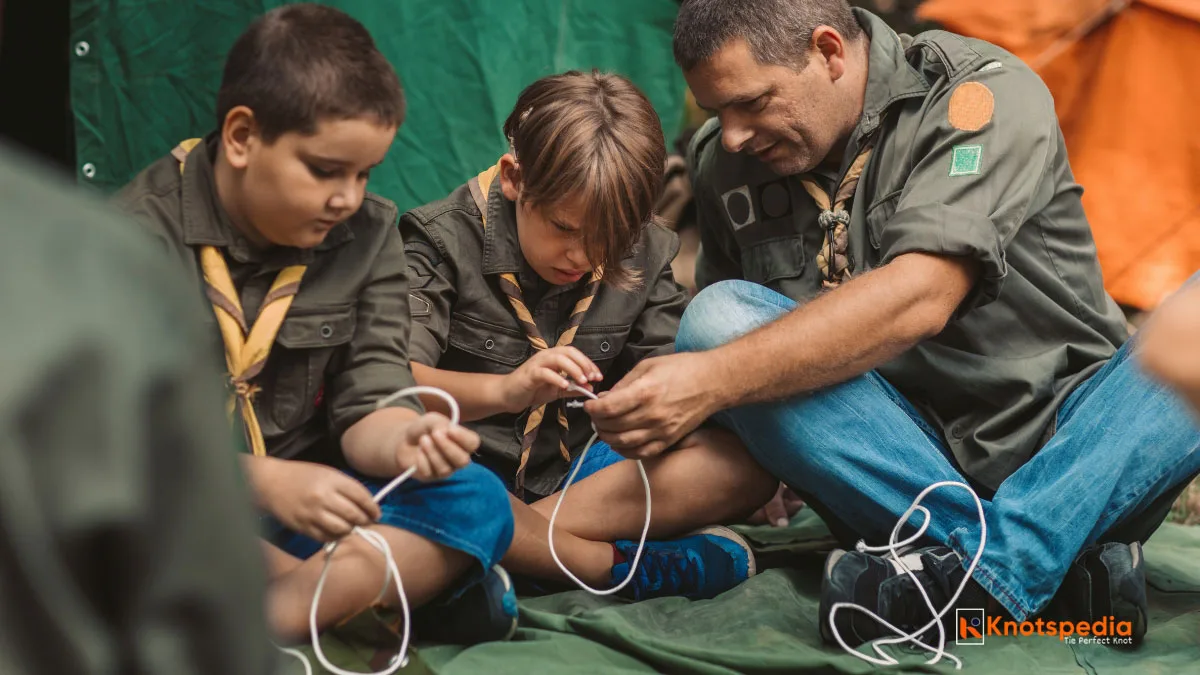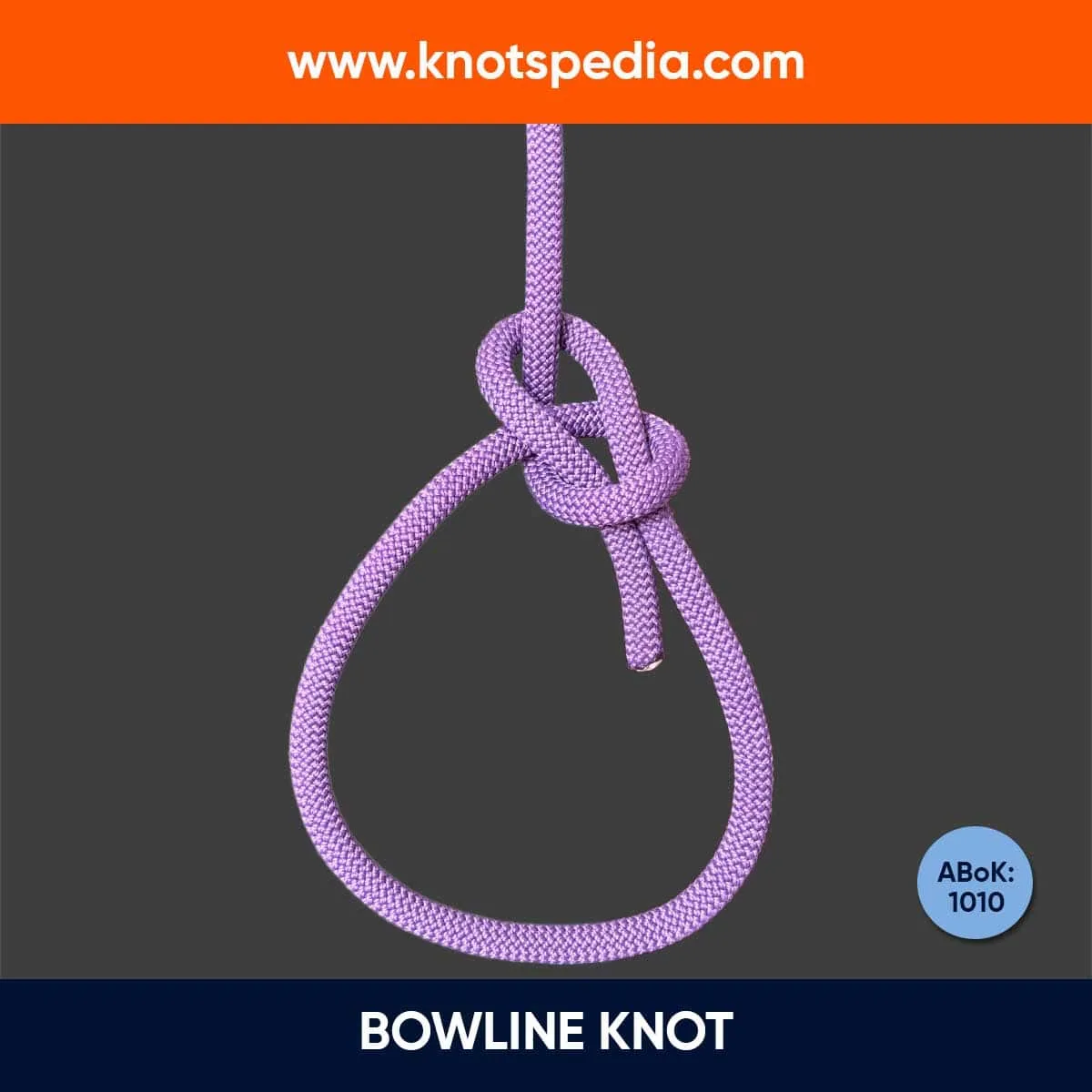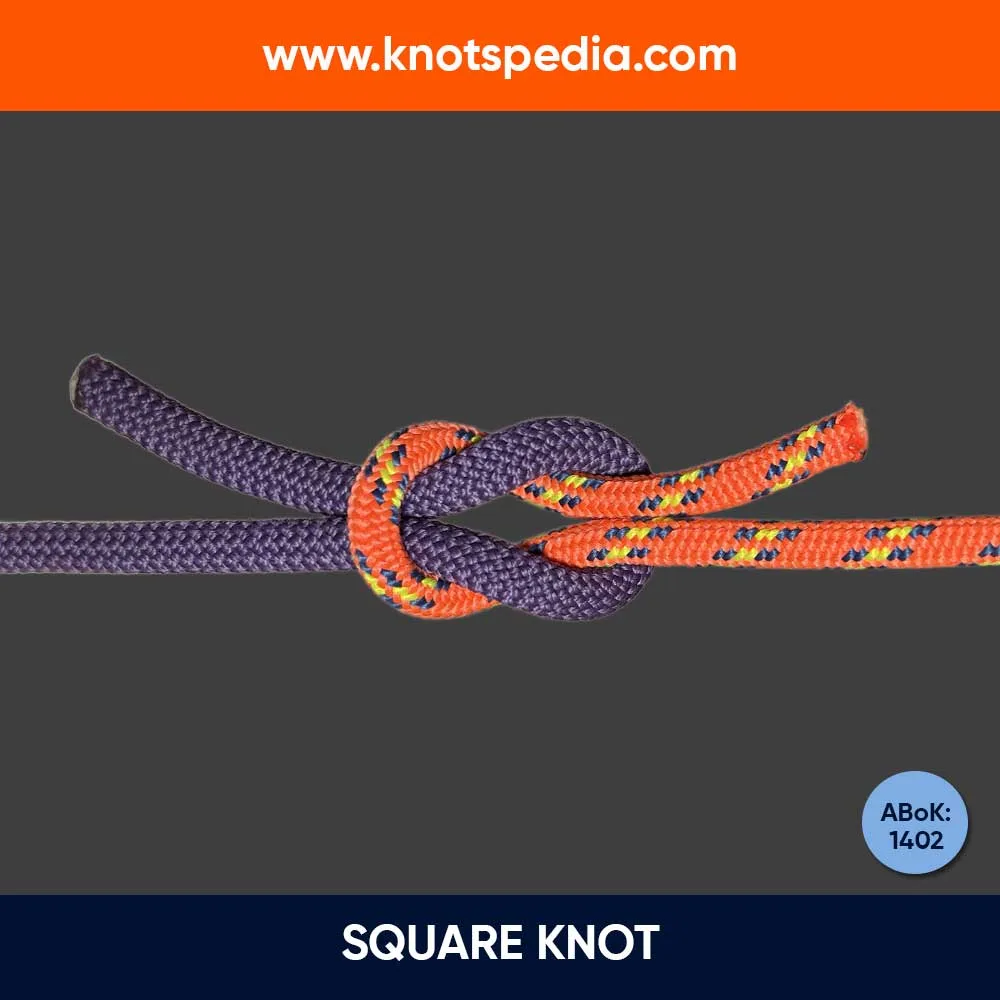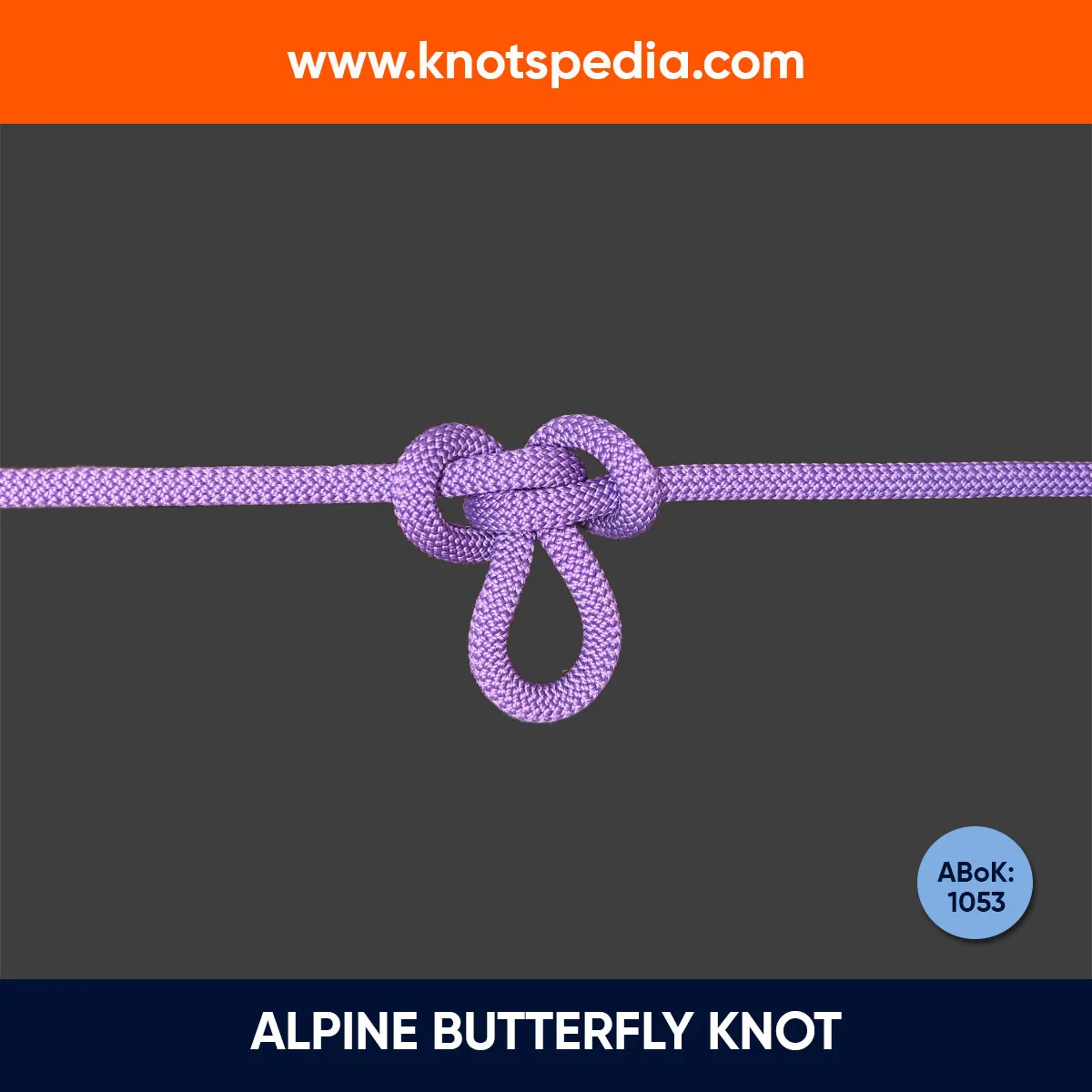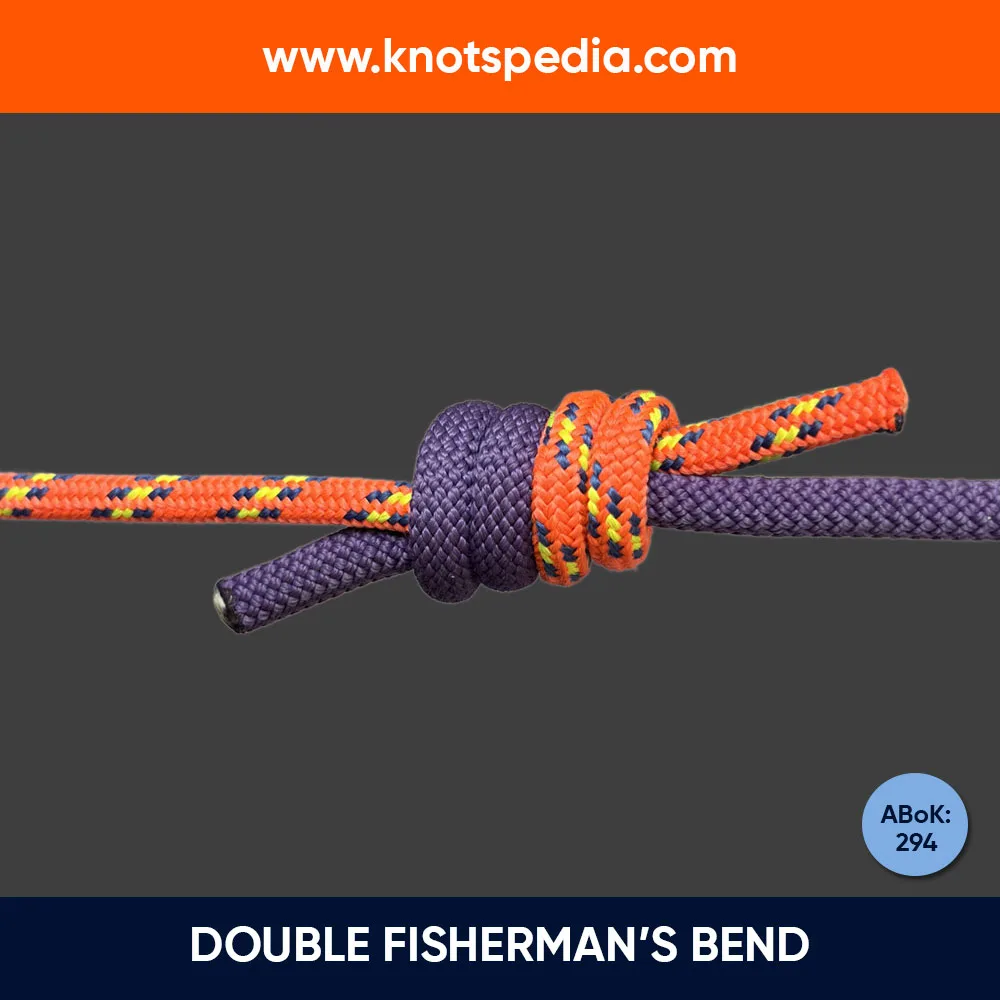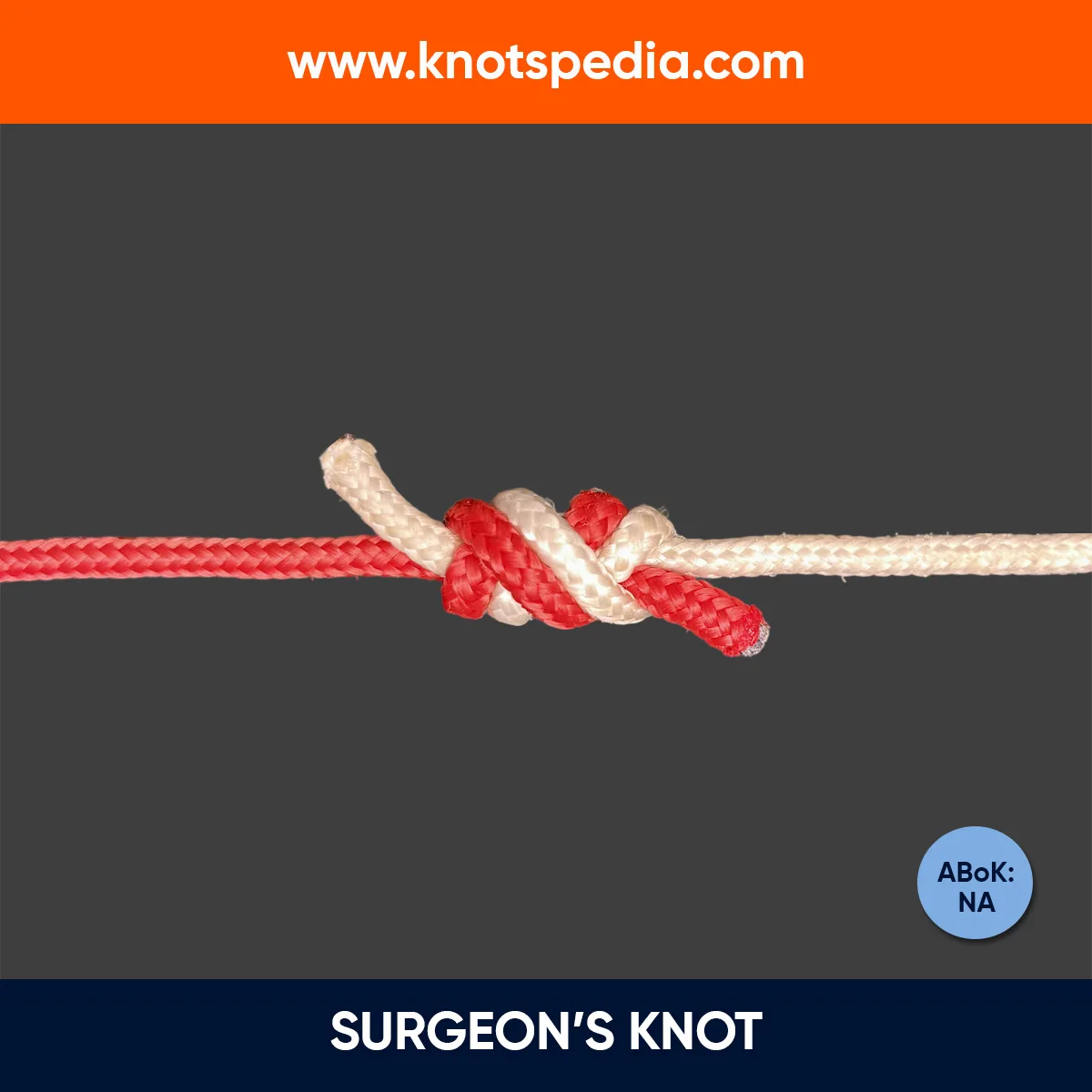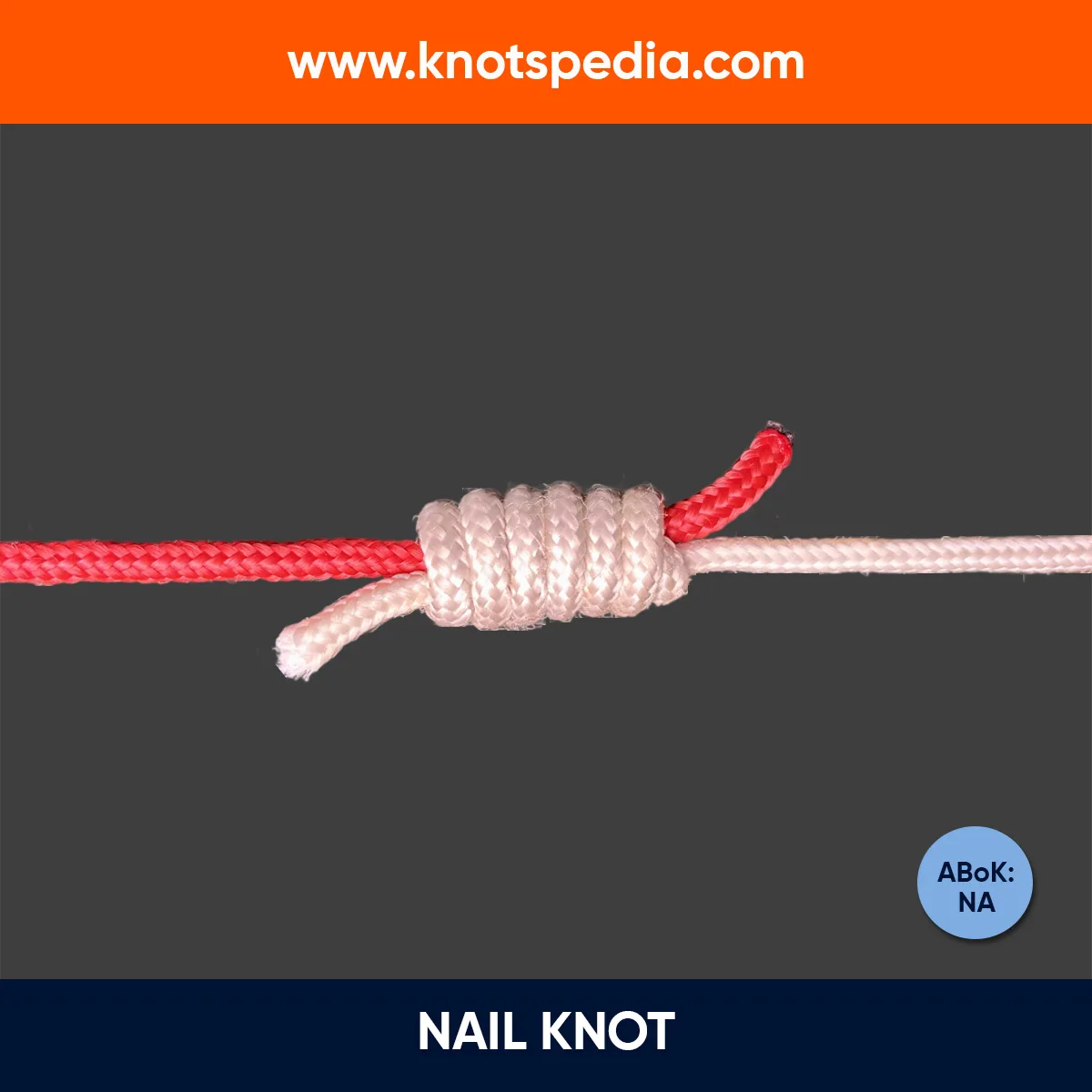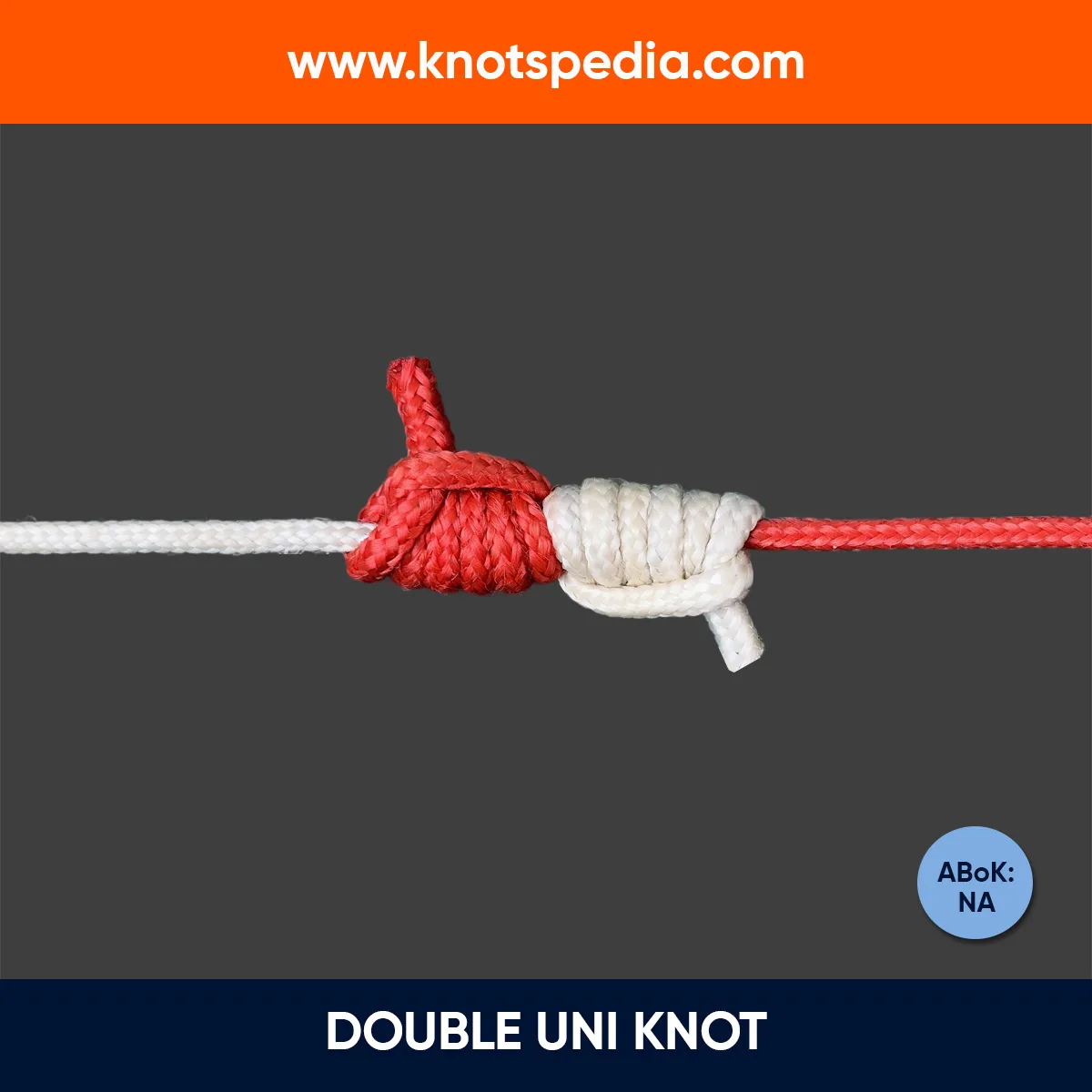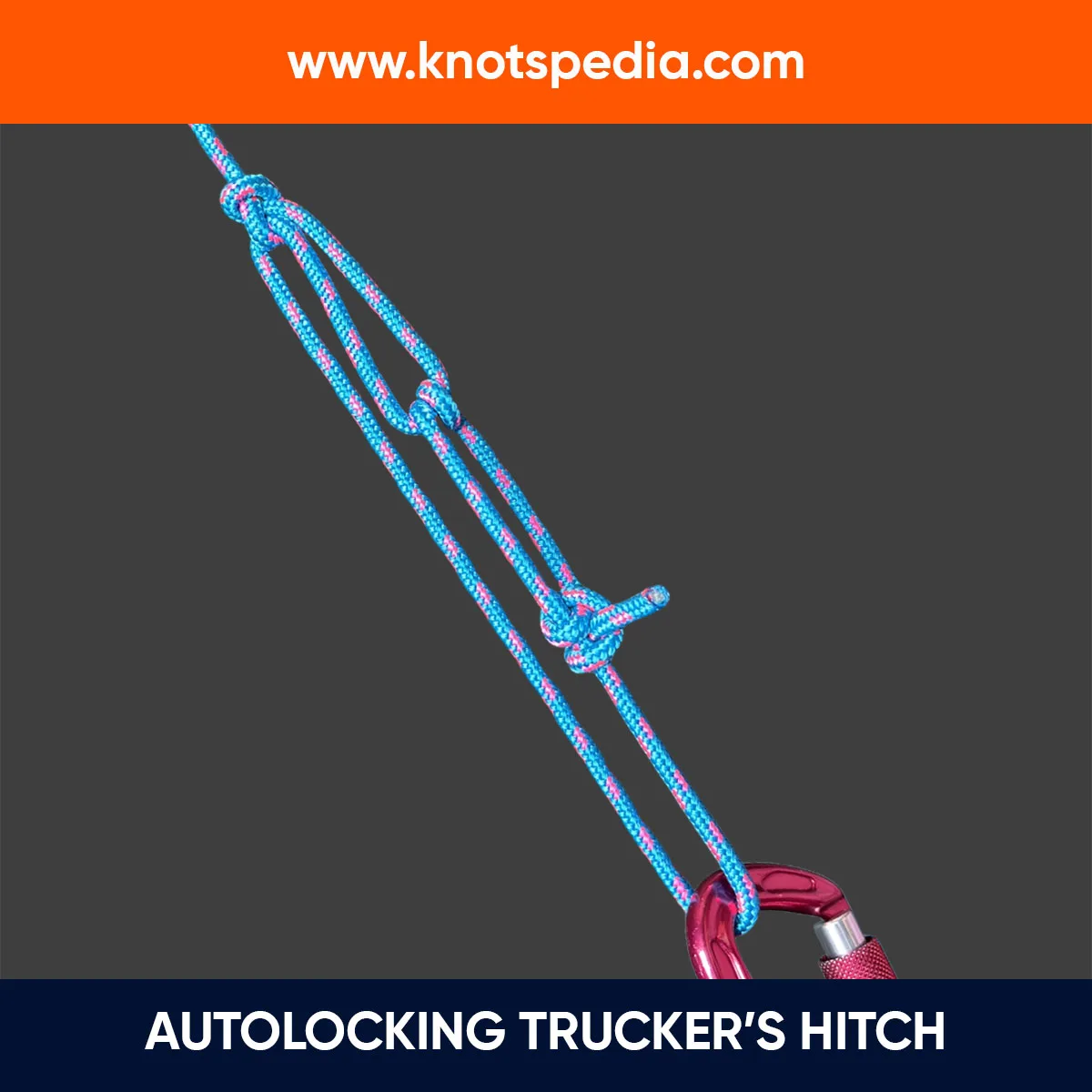The Carrick Bend joins two heavy ropes, hawsers, or cables that are stiff to be bent into other bend knots.
According to Ashley, this knot is an example of the perfect bend.
It’s easy to undo under heavy loads, does not slip, and works well with wet and slippery ropes.
What’s more, the symmetric shape makes it appealing for decorative purposes like mats, wall hangings, etc.
Let’s learn this knot in detail.
Carrick Bend Knot Details
Type: Bend
Other Names: Full Carrick Bend, Sailor’s Breastplate, Anchor Bend
ABoK Reference: #1428 #1439
How to a Carrick Bend Knot
- Make a simple loop with the blue rope.
- First, lay the orange rope under the blue loop and pass it over and under the arms of the blue rope.
- Now pass it over the blue rope, under the orange rope and over the blue rope again.
- Pull ends to tighten the knot.
You have tied this bend knot correctly if you notice 8 crossings within the knot and the two tails lie on the opposite sides of the knot.
Note: When the knot is allowed to capsize under tension, slippage of the line can occur. To account this, leave at least 4-8 inches long tag end (depending on the thickness of the rope used).
Carrick Bend Step by Step
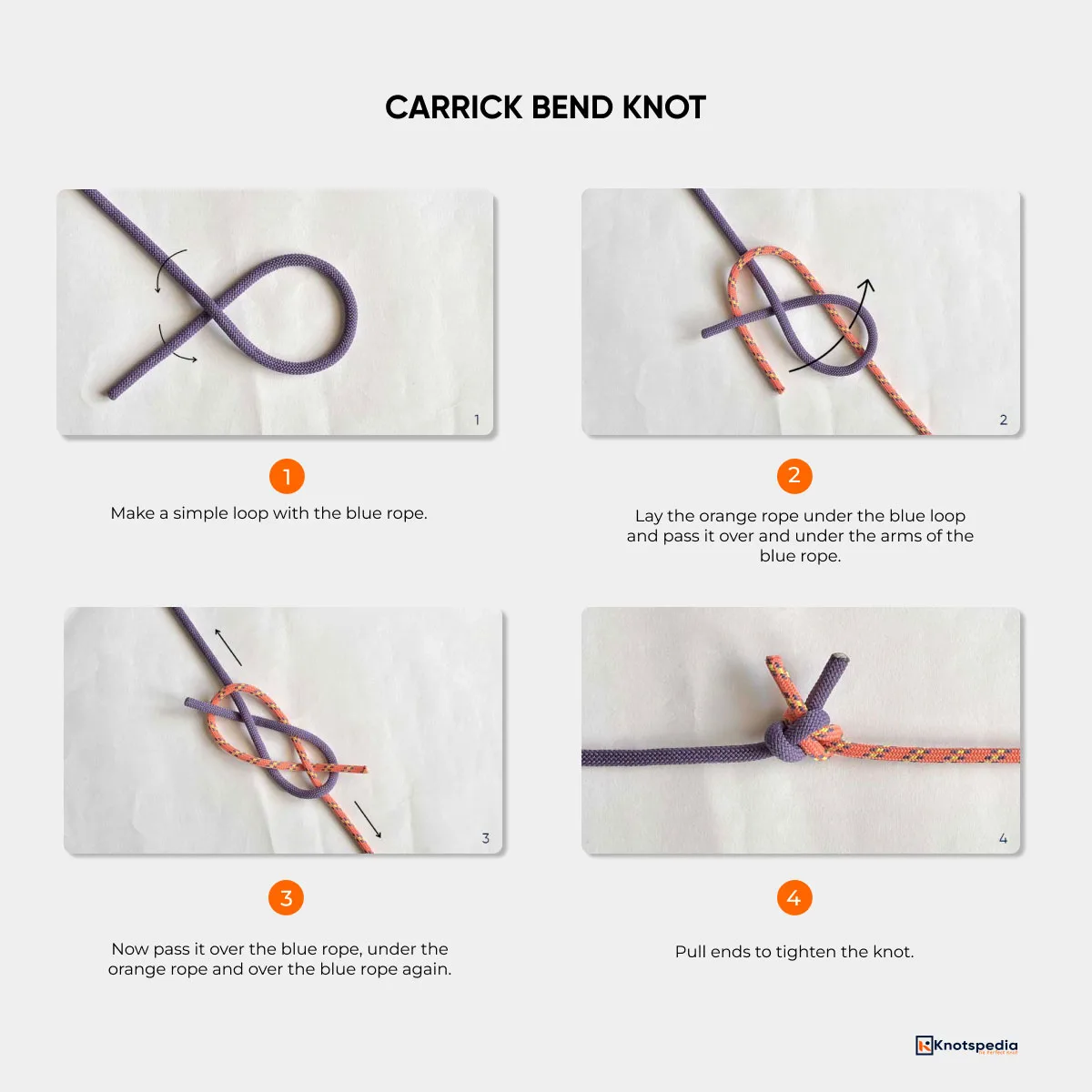
Variations of the Carrick Bend
The ropes in the full Carrick bend alternate between over and under at every crossing.
There are two possible variations:
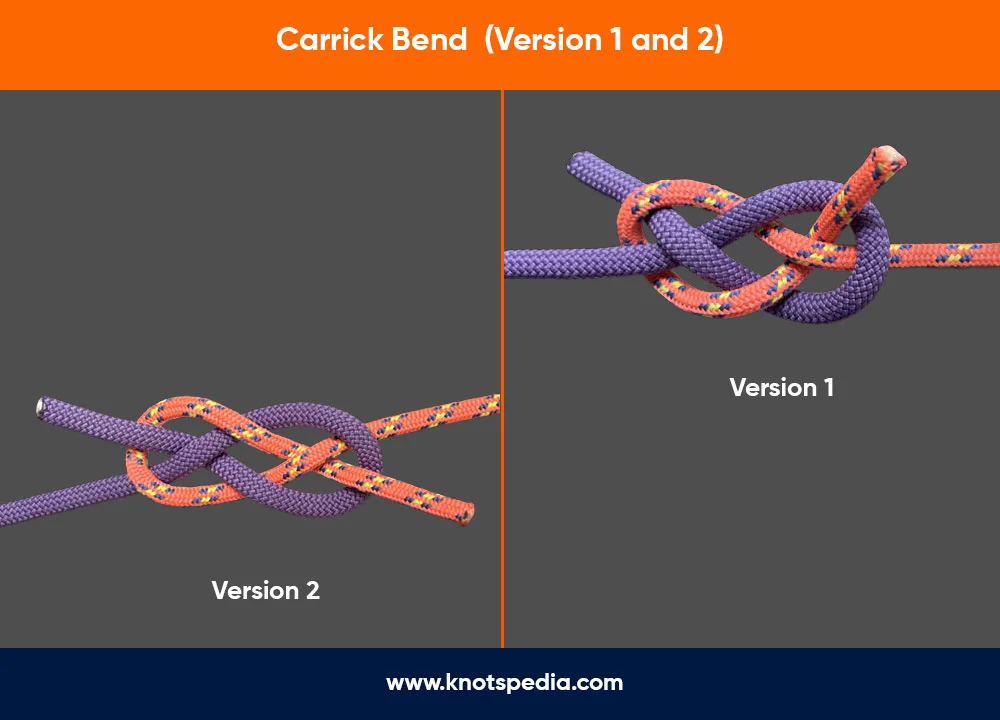
- In one variation, the tag ends emerge on the same side.
- In the other, the tag end emerges on the diagonally opposite ends.
The version in which the ends emerge diagonally opposite is the more secure of the two.
The secured form of this bend is used for joining two ropes together and the weaker one is mostly used for decorative works.
When capsized, both versions end up on the same side of the knot, so it’s important to identify them at the time of tying.
Capsizing the Bend

If you look at the structure of this bend, it looks symmetrical when it’s loose.
It has the tendency to capsize under tension, meaning as soon as the knot tightens, the shape vanishes, and it’s quite difficult to identify the knot.
The capsized version of the knot is secure and stable but might be bulkier for one’s liking.
Seizing the Bend
The process of seizing involves wrapping the ends of the rope to prevent the knot from collapsing when the load is applied.
It helps the knot keep its orientation under load and helps reduce the slippage.
It might be the best option in applications where a flat and decorative appearance is needed.
Pros & Cons
- Most secure and reliable bend knot
- Does not slip
- Easy to tie and untie under load
- Does not jam
- Easy to get it wrong
- Bulky knot
Application and Uses
During the old days, it was used to tie two large ropes like a hawser.
It’s used as a base to tie other knots like the Lanyard Knot.
It’s also used for decorative purposes to make bracelets, mats, and wall hangings.
Knots Based on Carrick Bend
Single Carrick Bend
The Single Carrick bend is the name of the group of knots that resemble the true Carrick bend and follow the same over and under pattern at the crossings.
According to Ashley, there are about 256 variations of the Over and under arrangements possible.
The Reef knot, Sheet bend, Granny knot, Thief knot are among the popular Single Carrick bends.
Double Coin Knot
The Double Coin knot is the decorative version of the Carrick bend.
It’s similar to the Carrick bend, but it is tied with a single rope.
It’s also the less secure version and is used for decorative purposes only (not for joining two ropes).
Carrick Bend Mat
The Carrick Bend Mat (ABoK #2287) belongs to a family of knots where the crossings make over and under sequence.
When the ends of the bend are connected together, or hidden behind the knot, it forms a Carrick Mat.
This same configuration is also one of the most basic Turk’s Head knots.
It makes excellent tablemats and hot pads.
Carrick Bend Loop Knot
The Carrick Bend Loop (ABoK #1033) or Carrick Loop has the same formation as one of the single Carrick bends.
As Ashley says, it is easy to untie but has no advantage over other loop knots that are simpler.
Diamond Knot
The Diamond Knot (ABoK #787) forms a decorative loop at the end of the rope.
It starts as a Carrick bend with the tag ends exiting diagonally opposite to each other.
When the knot is tightened and takes the final shape, the standing ends emerge in opposite directions.
It’s used as a decorative loop at the end of the lanyard and in prayer ropes by Christians.
That’s it for the article.
If you find this article helpful, bookmark it for future reference or share it with your family and friends!
